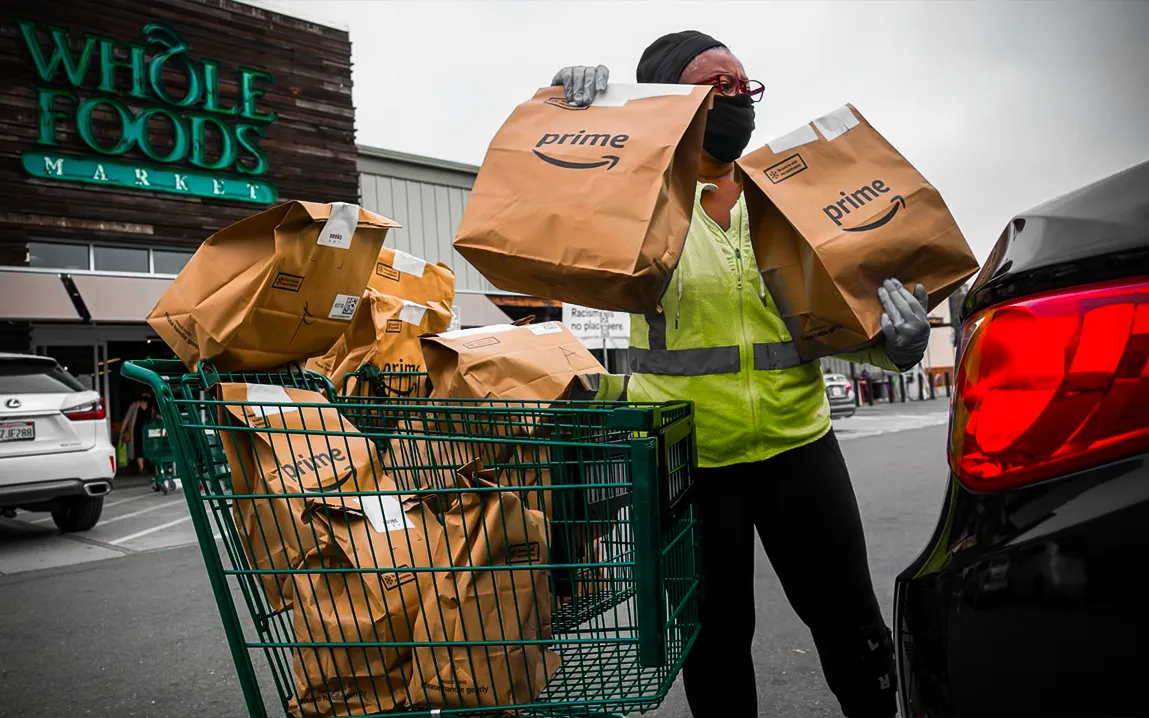One of the new bold steps Amazon has been taking in order to revolutionize grocery shopping is by piloting the integration of mini-warehouses within Whole Foods stores as a test, as of now, operating in Pennsylvania. Part of the larger vision here, this will strip down the shopping experience as it enables customers to pick orders from either Amazon or Whole Foods in one trip. This would reduce the need for consumers to visit several outlets, provide more convenience, and perhaps change the way people shop at grocery stores.
These mini-warehouses will allow customers to order a wide variety of products, including items not necessarily found in Whole Foods, like everyday consumables—beverages and packaged foods—beyond the traditional inventory of the store. This system marks yet another Amazon vision—long held—to link online retail services with the grocery’s physical footprint in order to create a seamless blend of both worlds for the customer.
This kind of automation is part of a broader Amazon push toward higher degrees of automation and efficiency, which has already transformed fulfillment centers around the world. The distribution centers and warehouses of Whole Foods seem like a natural place to introduce more automation, with cost-cutting and supply chain optimization being the current mantras. However, the robots are designed to be out of sight, processing orders and managing inventory in ways customers will never know exist. Although this type of automation will have a negative impact on labor in the long term—to reduce the need to do many warehouse tasks by hand—it is currently concentrating on operational efficiency rather than direct substitution for jobs in stores.
Amazon’s strategic vision regarding robotics and automation goes far beyond acquiring Whole Foods. In addition to the above initiative, the company has also been investing in automation technologies, particularly in its large fulfillment centers that house thousands of robots designed to handle wide varieties of tasks, including picking and packing and inventory management. With robotics integrated into Whole Foods, this is going to bring those capabilities into a new environment and could open the door to potentially broader rollouts across the rest of its grocery business, such as Amazon Fresh and Prime Pantry.
Of course, there is much to be excited about. The biggest challenges that Amazon will have to overcome are the intricacies of grocery distribution and, particularly, the perishables in this case, in terms of fresh produce, meat, and dairy, which need to be handled with care, temperature control, and speedy turnaround periods in order not to spoil. Balancing efficiency with the need to maintain the freshness of foods will be one of the biggest tests for Amazon’s technology as it looks to expand grocery offerings.
Besides, though the pace of warehouse automation accelerates swiftly, the company progresses much slowly in the automation of its face-to-face roles and captures cashiers, for instance. The United Food and Commercial Workers Union, which comprises a large proportion of supermarket workers, fears automation might result in the loss of jobs. Yet, Amazon has tried to still satisfy labor concerns by investing in changing rather than abolishing jobs in the near future.
In the grocery space, the company has been exploring and developing other innovations in parallel with its Whole Foods effort. For example, Amazon Go uses sensor technology and computer vision, allowing customers to walk in and pick whatever they want to take out of the store, while their purchases would be billed directly to their Amazon accounts. There is no current plan to deploy this technology into Whole Foods, but it does underscore the willingness of Amazon to experiment with new shopping models.
This robotic warehouse test at Whole Foods is the next step on Amazon’s way to total dominance of grocery sales. Although it rivals established players such as Walmart, the sector is not its stronghold as of yet. So it cuts costs by using automation while making more convenient services for the buyer in the light of a one-stop shop.
The move may pave the way for another sea change in the grocery landscape if it succeeds, as other retailers look to the future to replicate similar marketing strategies. Concentrating on integrating its services under one roof could allow Amazon to become something it may not have been: the unstoppable force in the grocery business, extending further its lead in retail innovation.



